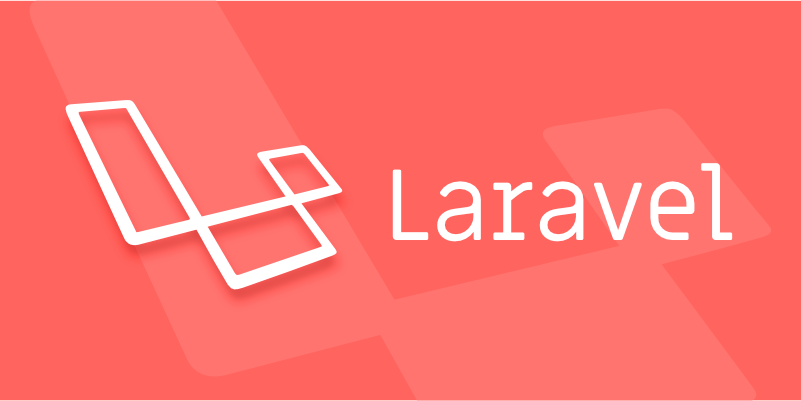Contextual Binding in the Laravel Service Container.
Jul 26, 2025 am 09:17 AMContextual Binding is a mechanism in Laravel service container that determines dependency injection based on the call context, allowing different classes to inject different implementations when relying on the same interface; its usage includes: 1. Specify the target class to bind the corresponding interface implementation, such as binding the StripePaymentProcessor for AController; 2. Multiple classes or multiple interfaces can be bound at the same time, such as uniformly handling the dependency of AController and BService on LoggerInterface; applicable scenarios include: different modules use different interface implementations, test environment injection mock dependencies, and multi-tenant applications for different configurations; attention should be paid to the binding order when using it, avoid conflicts with automatic resolution, and it is not advisable to overuse to maintain maintenance.

Laravel's service container is one of the cores of the entire framework, and Contextual Binding is a powerful but often overlooked feature it provides. Simply put, it allows you to decide what dependencies to inject according to the context of the call, rather than globally binding an interface to a concrete implementation.

This is very useful in some scenarios, such as you have two classes that rely on the same interface, but want them to use different implementations. Contextual Binding comes in handy at this time.
What is Contextual Binding?
Contextual Binding is a "on-demand binding" method in Laravel service containers. You can understand that not all cases require the same dependency injection, and sometimes different implementations need to be injected according to different types of requirements .

For example, suppose you have a PaymentProcessor interface, and the two implementations are StripePaymentProcessor and PayPalPaymentProcessor . Usually you will bind the interface to an implementation once, but if Class A needs to use Stripe and Class B needs to use PayPal, then ordinary binding is not enough.
This is where Contextual Binding comes in.

How to use Contextual Binding?
The steps to using Contextual Binding are not complicated, and are mainly divided into two steps:
- Specify the target class
- Bind the corresponding interface implementation
$this->app->when([AController::class])
->needs(PaymentProcessor::class)
->give(StripePaymentProcessor::class); The above code means: When AController needs to inject PaymentProcessor interface, bind it to StripePaymentProcessor implementation.
You can also bind multiple classes or multiple interfaces at the same time:
$this->app->when([AController::class, BService::class])
->needs(LoggerInterface::class)
->give(fn () => new FileLogger());The advantage of writing this way is that there is no need to write binding logic separately for each class, and it can be handled in a unified manner.
Which scenarios are suitable for using Contextual Binding?
- Different modules use different interfaces to implement
- For example, the backend and front-end user systems use different authentication methods.
- Test environment injection mock dependencies
- When testing certain classes, you can inject mock instances through context binding.
- Differentiated configuration in multi-tenant applications
- Different tenants may need to connect to different databases or APIs.
These scenarios can be solved gracefully through Contextual Binding, rather than making conditional judgments in the code to manually select instances.
Things to note when using
Bind order issue
If you have multiple contextual bindings for the same interface, the latter may overwrite the previous one, so pay attention to the registration order.Cannot conflict with automatic parsing
If not properly bound, Laravel may attempt to resolve automatically, resulting in an error. It is recommended to specify the default implementation clearly when binding the interface to avoid unexpected situations.Don't overuse
Although this function is flexible, it is not a master key. If contextual binding is used in too many places, it will be troublesome to maintain later.
In general, Contextual Binding is a very practical and advanced skill in Laravel containers. After mastering it, you can be more handy in complex dependency management. Although it seems a bit confusing, it is not difficult to actually operate as long as you understand its usage logic.
Basically that's it.
The above is the detailed content of Contextual Binding in the Laravel Service Container.. For more information, please follow other related articles on the PHP Chinese website!

Hot AI Tools

Undress AI Tool
Undress images for free

Undresser.AI Undress
AI-powered app for creating realistic nude photos

AI Clothes Remover
Online AI tool for removing clothes from photos.

Clothoff.io
AI clothes remover

Video Face Swap
Swap faces in any video effortlessly with our completely free AI face swap tool!

Hot Article

Hot Tools

Notepad++7.3.1
Easy-to-use and free code editor

SublimeText3 Chinese version
Chinese version, very easy to use

Zend Studio 13.0.1
Powerful PHP integrated development environment

Dreamweaver CS6
Visual web development tools

SublimeText3 Mac version
God-level code editing software (SublimeText3)

Hot Topics
 How to set environment variables in PHP environment Description of adding PHP running environment variables
Jul 25, 2025 pm 08:33 PM
How to set environment variables in PHP environment Description of adding PHP running environment variables
Jul 25, 2025 pm 08:33 PM
There are three main ways to set environment variables in PHP: 1. Global configuration through php.ini; 2. Passed through a web server (such as SetEnv of Apache or fastcgi_param of Nginx); 3. Use putenv() function in PHP scripts. Among them, php.ini is suitable for global and infrequently changing configurations, web server configuration is suitable for scenarios that need to be isolated, and putenv() is suitable for temporary variables. Persistence policies include configuration files (such as php.ini or web server configuration), .env files are loaded with dotenv library, and dynamic injection of variables in CI/CD processes. Security management sensitive information should be avoided hard-coded, and it is recommended to use.en
 How to develop AI intelligent form system with PHP PHP intelligent form design and analysis
Jul 25, 2025 pm 05:54 PM
How to develop AI intelligent form system with PHP PHP intelligent form design and analysis
Jul 25, 2025 pm 05:54 PM
When choosing a suitable PHP framework, you need to consider comprehensively according to project needs: Laravel is suitable for rapid development and provides EloquentORM and Blade template engines, which are convenient for database operation and dynamic form rendering; Symfony is more flexible and suitable for complex systems; CodeIgniter is lightweight and suitable for simple applications with high performance requirements. 2. To ensure the accuracy of AI models, we need to start with high-quality data training, reasonable selection of evaluation indicators (such as accuracy, recall, F1 value), regular performance evaluation and model tuning, and ensure code quality through unit testing and integration testing, while continuously monitoring the input data to prevent data drift. 3. Many measures are required to protect user privacy: encrypt and store sensitive data (such as AES
 How to make PHP container support automatic construction? Continuously integrated CI configuration method of PHP environment
Jul 25, 2025 pm 08:54 PM
How to make PHP container support automatic construction? Continuously integrated CI configuration method of PHP environment
Jul 25, 2025 pm 08:54 PM
To enable PHP containers to support automatic construction, the core lies in configuring the continuous integration (CI) process. 1. Use Dockerfile to define the PHP environment, including basic image, extension installation, dependency management and permission settings; 2. Configure CI/CD tools such as GitLabCI, and define the build, test and deployment stages through the .gitlab-ci.yml file to achieve automatic construction, testing and deployment; 3. Integrate test frameworks such as PHPUnit to ensure that tests are automatically run after code changes; 4. Use automated deployment strategies such as Kubernetes to define deployment configuration through the deployment.yaml file; 5. Optimize Dockerfile and adopt multi-stage construction
 What is Configuration Caching in Laravel?
Jul 27, 2025 am 03:54 AM
What is Configuration Caching in Laravel?
Jul 27, 2025 am 03:54 AM
Laravel's configuration cache improves performance by merging all configuration files into a single cache file. Enabling configuration cache in a production environment can reduce I/O operations and file parsing on each request, thereby speeding up configuration loading; 1. It should be enabled when the application is deployed, the configuration is stable and no frequent changes are required; 2. After enabling, modify the configuration, you need to re-run phpartisanconfig:cache to take effect; 3. Avoid using dynamic logic or closures that depend on runtime conditions in the configuration file; 4. When troubleshooting problems, you should first clear the cache, check the .env variables and re-cache.
 How to build a content payment platform through PHP How to implement PHP paid reading system
Jul 25, 2025 pm 06:30 PM
How to build a content payment platform through PHP How to implement PHP paid reading system
Jul 25, 2025 pm 06:30 PM
To build a PHP content payment platform, it is necessary to build a user management, content management, payment and permission control system. First, establish a user authentication system and use JWT to achieve lightweight authentication; second, design the backend management interface and database fields to manage paid content; third, integrate Alipay or WeChat payment and ensure process security; fourth, control user access rights through session or cookies. Choosing the Laravel framework can improve development efficiency, use watermarks and user management to prevent content theft, optimize performance requires coordinated improvement of code, database, cache and server configuration, and clear policies must be formulated and malicious behaviors must be prevented.
 Explain Laravel Eloquent Scopes.
Jul 26, 2025 am 07:22 AM
Explain Laravel Eloquent Scopes.
Jul 26, 2025 am 07:22 AM
Laravel's EloquentScopes is a tool that encapsulates common query logic, divided into local scope and global scope. 1. The local scope is defined with a method starting with scope and needs to be called explicitly, such as Post::published(); 2. The global scope is automatically applied to all queries, often used for soft deletion or multi-tenant systems, and the Scope interface needs to be implemented and registered in the model; 3. The scope can be equipped with parameters, such as filtering articles by year or month, and corresponding parameters are passed in when calling; 4. Pay attention to naming specifications, chain calls, temporary disabling and combination expansion when using to improve code clarity and reusability.
 PHP development user permission management monetization PHP permission control and role management
Jul 25, 2025 pm 06:51 PM
PHP development user permission management monetization PHP permission control and role management
Jul 25, 2025 pm 06:51 PM
User permission management is the core mechanism for realizing product monetization in PHP development. It separates users, roles and permissions through a role-based access control (RBAC) model to achieve flexible permission allocation and management. The specific steps include: 1. Design three tables of users, roles, and permissions and two intermediate tables of user_roles and role_permissions; 2. Implement permission checking methods in the code such as $user->can('edit_post'); 3. Use cache to improve performance; 4. Use permission control to realize product function layering and differentiated services, thereby supporting membership system and pricing strategies; 5. Avoid the permission granularity is too coarse or too fine, and use "investment"
 How to use PHP combined with AI to analyze video content PHP intelligent video tag generation
Jul 25, 2025 pm 06:15 PM
How to use PHP combined with AI to analyze video content PHP intelligent video tag generation
Jul 25, 2025 pm 06:15 PM
The core idea of PHP combining AI for video content analysis is to let PHP serve as the backend "glue", first upload video to cloud storage, and then call AI services (such as Google CloudVideoAI, etc.) for asynchronous analysis; 2. PHP parses the JSON results, extract people, objects, scenes, voice and other information to generate intelligent tags and store them in the database; 3. The advantage is to use PHP's mature web ecosystem to quickly integrate AI capabilities, which is suitable for projects with existing PHP systems to efficiently implement; 4. Common challenges include large file processing (directly transmitted to cloud storage with pre-signed URLs), asynchronous tasks (introducing message queues), cost control (on-demand analysis, budget monitoring) and result optimization (label standardization); 5. Smart tags significantly improve visual






